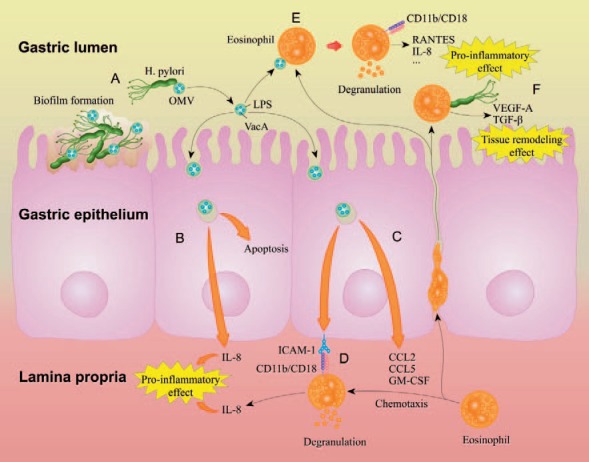Fig. 2.

The role of eosinophils and its mechanisms in H. pylori gastritis. A. OMVs continuously shed from the surface of H. pylori in the gastric lumen. OMVs contain LPS and VacA. Part of H. pylori form biofilms on the surface of gastric epithelium. B. Upon the uptake and internalization of H. pylori OMVs, gastric epithelial cells show increased apoptosis and release of IL-8, causing pro-inflammatory effect. C. Internalization of H. pylori OMV causes gastric epithelial cells to actively express ICAM-1 and release chemokines CCL2, CCL5, and GM-CSF that recruit eosinophil migration from the lamina propria to the epithelium. D. Infiltrated eosinophils, expressing the β2 integrin CD11b/CD18, are stimulated by the gastric epithelial cells via binding to ICAM-1, leading to eosinophil degranulation and IL-8 production, which contributes to the inflammatory response. E. Eosinophils can also transmigrate through the epithelium into the gastric lumen, where contact with H. pylori OMVs may stimulate eosinophil expression of CD11b/CD18, release of RANTES and IL-8, and also eosinophil degranulation, participating in the inflammatory response. F. H. pylori can probably induce eosinophils in the gastric lumen to produce VEGF-A and TGF-β, accelerating tissue remodeling and would healing of gastric mucosa.
